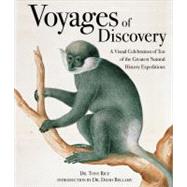
| Foreword | |
| Introduction | |
| The Art of Nature | |
| Voyage to Jamaica | |
| Surveying Ceylon | |
| Sojourn to Surinam | |
| Travels in North America | |
| Pacific Crossing | |
| Return to the South Seas | |
| Charting Australia | |
| Sailing With the Beagle | |
| Amazonia and Beyond | |
| Fathoming the Deep | |
| The Challenger Expedition | |
| Epilogue | |
| Selected Biographies | |
| Bibliography | |
| Index, Acknowledgments, Picture Credits | |
| Table of Contents provided by Publisher. All Rights Reserved. |
The New copy of this book will include any supplemental materials advertised. Please check the title of the book to determine if it should include any access cards, study guides, lab manuals, CDs, etc.
The Used, Rental and eBook copies of this book are not guaranteed to include any supplemental materials. Typically, only the book itself is included. This is true even if the title states it includes any access cards, study guides, lab manuals, CDs, etc.